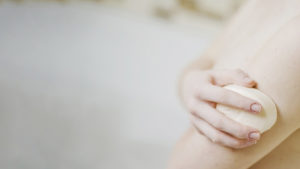
Big Misunderstanding About Fish Oil Supplements
Fish oil supplements have long been lauded for their numerous health benefits, from supporting cardiovascular health to promoting cognitive function. However, as their popularity has

While bones might seem like hard and lifeless structures in our bodies, in reality, bones are actually living tissues with blood supply and an active metabolism. Our bones are actually undergoing a constantly life cycle – breaking down old bone and building up new bone. This is why children and adolescents are often advised to consume a good amount of calcium in order to ensure that the growth of their bones is not hindered.
However, as we age, it is inevitable that we will end up losing bone density as our old bone cells are broken down faster than new bone cells are made. While this is normal, excessive net bone loss can lead to low bone density (osteopenia), weakness of the bone and eventually osteoporosis.

This is especially prominent in women as 1 in 3 women over the age of 50 will experience osteoporotic fractures. These fractures commonly occur in the hip, spine and wrists.
As mentioned before, women on average are more likely to develop low bone density or osteoporosis. This is due to women having smaller and thinner bones compared to men, and also because, estrogen, a hormone that protects our bones will end up decreasing sharply when women reach menopause. However, that being said, men are not exempt from bone loss as well as we will all begin losing bone density as we age.
While we cannot prevent bone density loss due to age, there are other factors that we can address early on before low bone density sets in. Here are 4 simple steps to ensure healthy bones.
1. Calcium Rich Diet
Not getting enough calcium in our diets can significantly increase the risk of developing osteoporosis as a calcium is crucial for your body to generate new bone cells. Good sources of calcium include the following:
2. Vitamin D Rich Diet
Without sufficient Vitamin D levels, we are unable to efficiently absorb calcium from our diets. When this happens, our bodies will end up taking calcium away from our bones, leading to weaker bones and bone density loss.
There are two main sources of Vitamin D, Vitamin D our skin generates on its own through direct exposure to sunlight and Vitamin D that we get from our diets. Most commonly, fortified milk, egg yolks, saltwater fish and organ meat liver are Vitamin D rich foods.
3. Exercise
Physical activity during childhood and adolescence increases bone density and strength. Studies have shown that children and adolescents who regularly exercise are more likely to reach their peak bone density by age 30, and as a result, are less likely to have significant bone loss.
The best exercises to prevent bone loss are actually weight-bearing exercises such as walking, hiking, jogging, badminton, dancing and weight lifting.
4. Quit Smoking
We all know that smoking is bad for our overall health and lungs but did you also know that smoking is pretty bad for our bones as well?
The toxic chemicals found in cigarette smoke can lower estrogen levels of women and cause premature bone loss. Besides that, both men and women who smoke have found to be less capable of absorbing calcium from their diets. The less calcium from our diets automatically means that our body needs to break down our bone cells for the calcium it needs, leading to bone loss and weak bones.
5. Vitamin K2 Rich Diet
While most people have never heard of Vitamin K2, numerous clinical studies have suggested that this rather rare vitamin could the missing link between diet and several chronical diseases. Just like Vitamin D, one of the most important functions of the vitamin is to regulate calcium deposition by promoting calcium absorption in our blood. By removing excess calcium in our blood, the vitamin also plays an important role in reducing the risk of blood vessel calcification.

Fish oil supplements have long been lauded for their numerous health benefits, from supporting cardiovascular health to promoting cognitive function. However, as their popularity has
Everything from the history, to the benefits and side effects of Tiger Milk Mushroom

Say goodbye to suffering in silence! Some call it miracle supplement, some call it the one thing they can’t live without. So what is it?

Our largest organ is actually our skin, and it’s a pretty important one too as it plays an integral role in keeping us healthy. Our